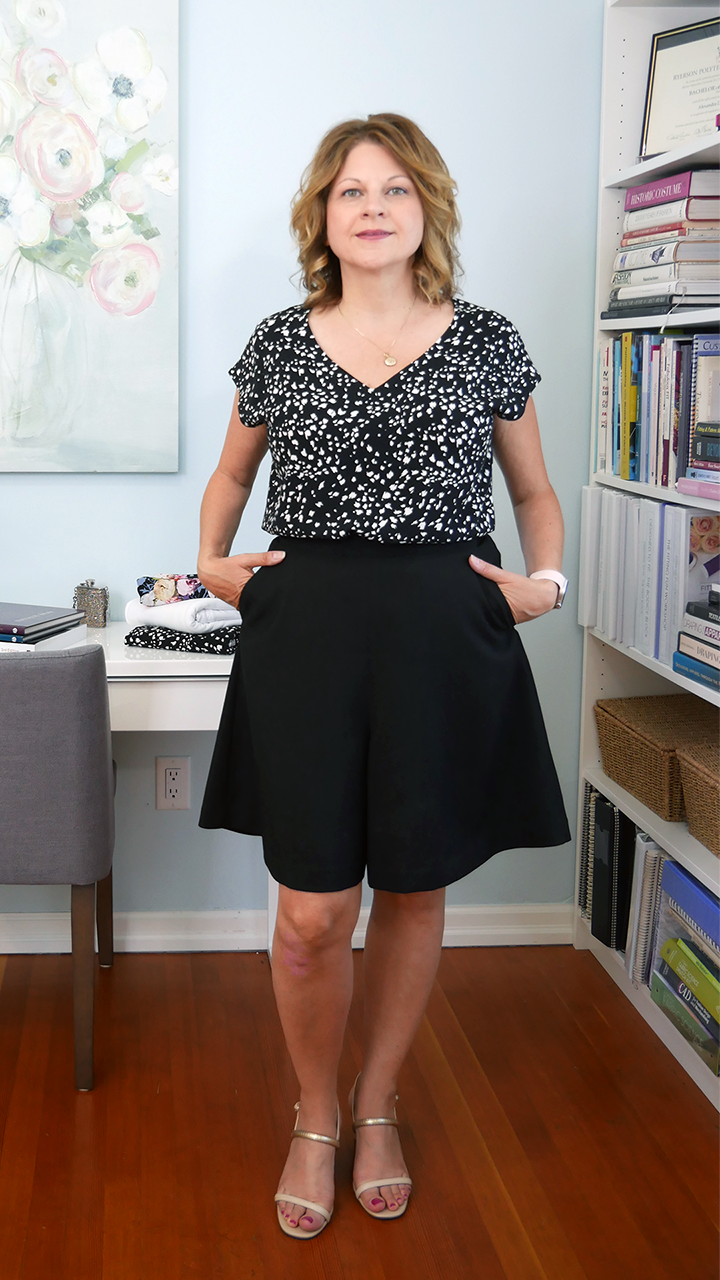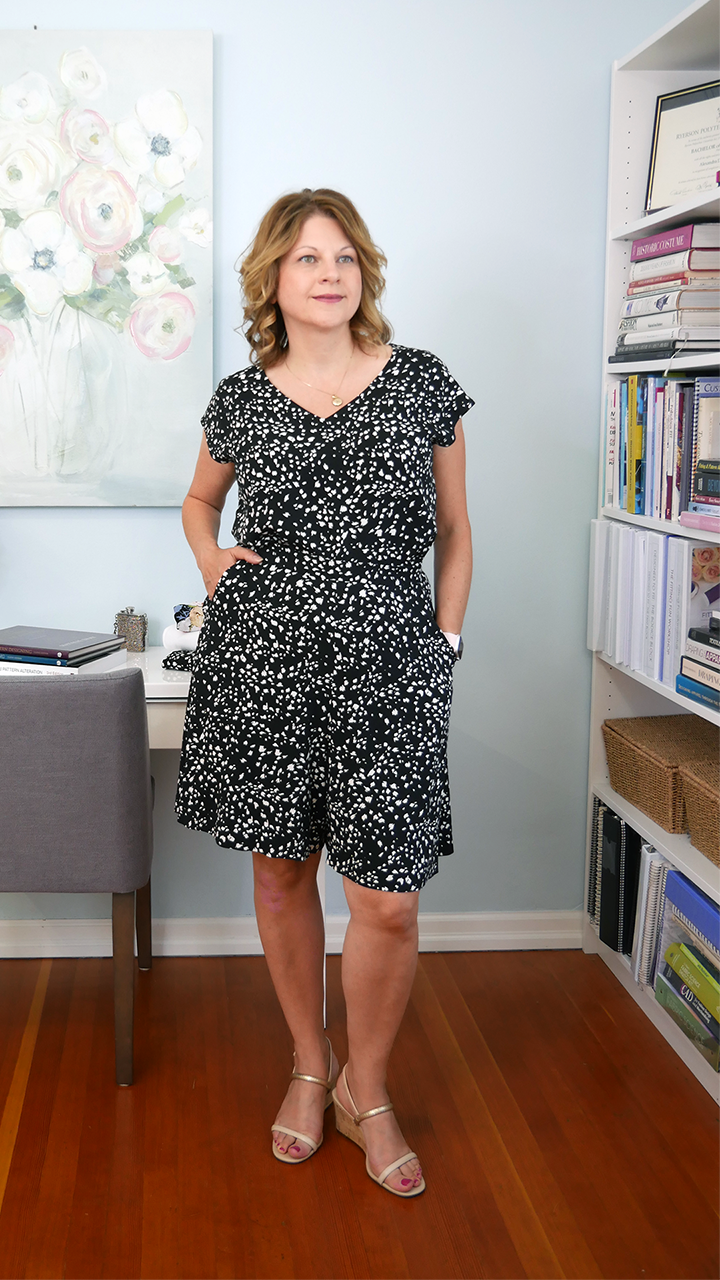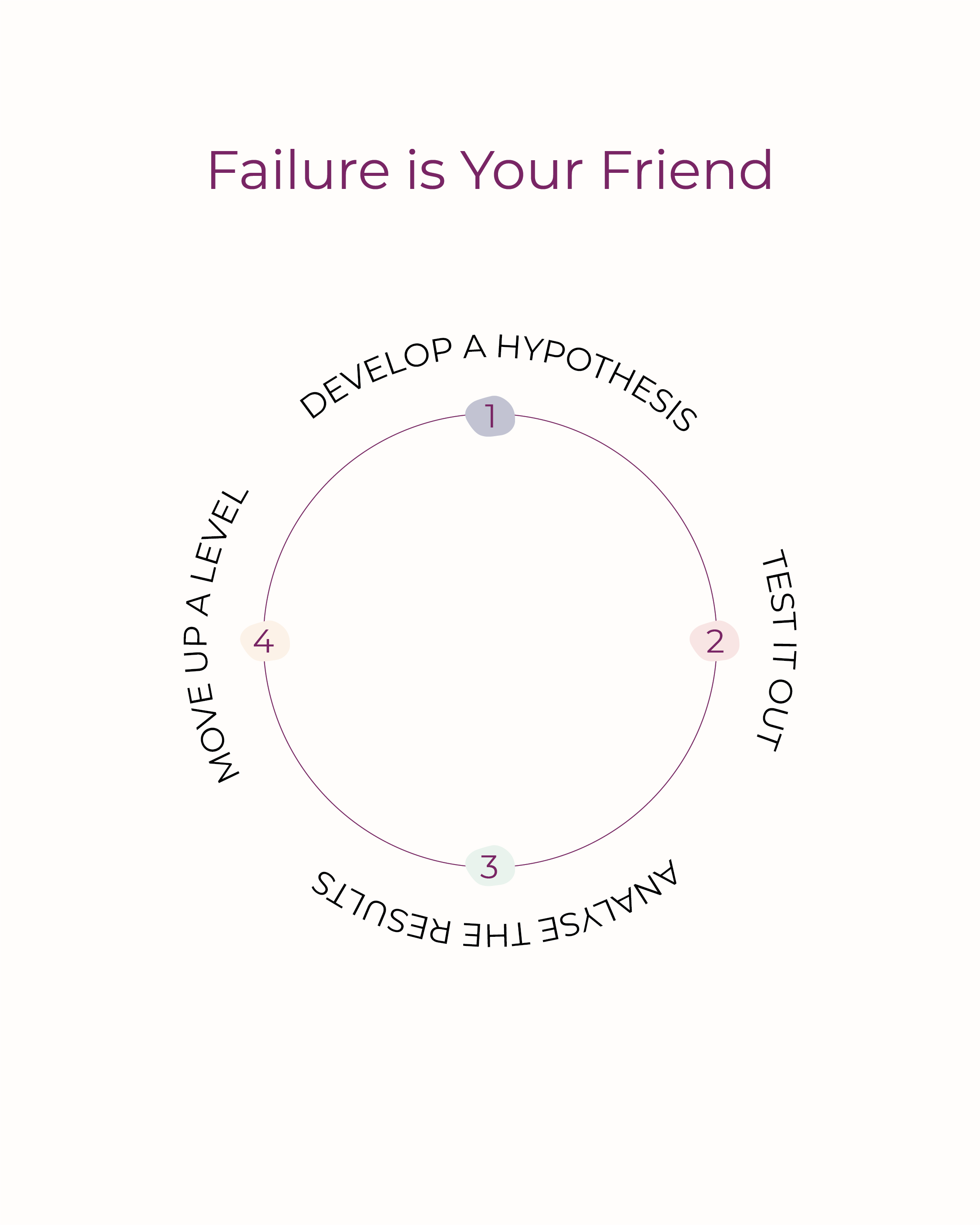Confidently Create Garments that Fit
The Skirt Block Mini Class
They say it's too complex.
All that measuring and math! Why bother when there are so many patterns that are inexpensive and ready made?
Well, I'm here to tell you that creating a block pattern is no more complex than what you're already trying to do when you buy a ready made sewing pattern. In fact, you may even find it easier than trying to figure out how to make that ready made pattern fit you.
If you constantly struggle with fitting, no matter what pattern company you use, creating a set of personalized pattern blocks may just be the right next step for you. A basic block drafted to your measurements and refined to fit your shape will mean you get to skip all the fitting issues that arise for you in commercially made patterns.
The process of creating your basic block is exactly like learning how to sew; you'll take it one step at a time. You'll take your body measurements, make a few calculations and follow a sequence of steps that will reveal a made to measure pattern,...
How to Create Patterns that Fit
Recently this question popped into my inbox: "How do I begin creating my own patterns that fit?" I get this question a lot so I thought it would be good to address it. In this video I'll share the answer to this question and give you an opportunity that you'll definitely want to take me up on if you want to get started at no cost to you.
If you're someone with a growing desire to learn more about pattern making for fit and design, you're not alone. As you gain and master more advanced sewing skills you'll naturally become intellectually and creatively ready to level up. You'll likely become tired of constantly making the same fitting adjustments to commercial sewing patterns and fed up with compromising on styles that are close, but not exactly what you're looking for.
If you constantly struggle with fitting no matter what pattern company you use, creating a set of personalized pattern blocks may just be the right next step for you. A basic block drafted to your measurements...
How to Draft Culottes
If you followed through with all of the lessons in the Skirt Block Mini Class, you’ll already have a flared skirt pattern that you can use to follow along in this week’s project. If you haven’t created a flared skirt pattern yet, you’ll need to create one or have a commercial pattern you can use as your foundation because this week I’m showing you how to create culottes using a flared skirt pattern.
Watch the video now to begin drafting your personal culotte pattern.

I hope you enjoy this pattern design project. With this easy adaptation to your skirt block you now have infinite possibilities for easy fitting, simple to sew versatile garments. For instructions on how to create a waistband for your culotte pattern get guidance with this video tutorial.

If you’re ready to level up your drafting and pattern making skills, visit Designed to Fit: The Bodice Block and The Custom Stretch Knit Bodice for more advanced...
How to Create a Balanced Flared Skirt
Do you have a skirt block that you don't quite know what to do with? Or perhaps a straight skirt pattern that fits you perfectly that you'd like to use as a base for a new style? If that's the case, watch this video because I'm going to show you how to create and balance a flared skirt pattern.
In this tutorial I'll be working with some scaled block patterns. If you don't already have a skirt pattern to work from you can download my scaled block patterns or sign up for The Skirt Block Mini Class and create your very own custom sized skirt pattern. I'll leave links to those somewhere on this page.
Let me show you how to manipulate a basic skirt pattern to create flare and then balance the flare so that the hem hangs evenly all the way around. We're also going to talk about grainlines so that you can see how drastically it can change the look and hang of your skirt.
As I mentioned in the video, get your FREE Scaled Block Patterns to practice your pattern work. Click...
How to Draft a Straight Waistband
Did you know that establishing a good fitting waistband is an important part of the fitting process for skirts and pants? Think about it, the waistband holds these garments up and secures them in place at a comfortable level.
If the waistband is too small, the garment will likely sit too high on the body. If it's too large, the garment will sit too low. In both cases an ill fitting waistband will cause fitting issues below it and will ultimately be quite uncomfortable.
So today, I'll show you how to draft a basic straight waistband using your personal body measurements.
Watch the video now.
If you're interested in creating your own made to measure skirt block join The Skirt Block Mini Class. It's absolutely free.
When you sign up for the class you'll receive the drafting instructions for a woven skirt block and a series of emails that will give you step-by-step guidance in creating a custom size skirt pattern using your personal body measurements.
If you're tired...
Fitting Knits: How to Determine the Negative Ease on the Jenny Tee
This month I've turned the focus to fitting knits. I have covered the topic to some extent previously so if you want more information on this topic, just click on the "fitting knits" category in the sidebar of the tutorial section of my website inhousepatternsstudio.com. If you're already on my website, just look to the right and you'll see the topic category there.
As you likely already know, I believe that understanding the balance of a garment on your body is the key to achieving good fit. I've shared this rather extensively in The Perfect Fit Guide as well as in all of my online courses and workshops. While I usually talk about this in relation to woven garments, it is a useful tool in assessing fit in knits as well, so last week I showed you how to find the balance lines on the In-House Patterns Jenny tee in the hope of helping you understand how to assess the fit of the pattern.
Since we've already determined the position of the balance lines on the pattern, I thought we could...
Fitting Knits: How to Find the Balance Lines on the Jenny Tee
If you're familiar with my fitting methods and have downloaded your copy of The Perfect Fit Guide, you already know that understanding the balance of the garment on your body is the key to making a pattern fit you. As a result I get asked this question all the time:
"How do I find the balance lines on a sewing pattern?"
I do give you some general guidelines about finding these important lines on other sewing patterns in this video but since we're talking about knits this month, let me show you how to find them on the In-House Patterns Jenny Tee.
I'd love for the Jenny Tee to be your go-to t-shirt pattern and I know achieving a perfect fit is the key to making that happen. If you already have a copy of the pattern, I hope you'll follow along because locating the balance lines on the pattern and transferring them to your sample will give you the guidance you need to assess the fit and solve any issues that may arise. Watch the video for all the details.
Next week we'll...
How to Assess Garment Balance
I have a very, very important concept that I want to share with you today. It is the concept of garment balance.
If you don't know me yet, my fitting philosophy is all about balancing the garment on your body using horizontal and vertical balance lines. I truly believe that balance lines, when put on the pattern and then transferred to the sample garment, will give you the ability to understand how to balance the garment on the body you are fitting.
Tracy, a member of the In-House Patterns Sudio Facebook Group, was kind enough to allow me to use her photos to demonstrate how to use the balance lines to assess fit. Tracy shared her sample of the Lila sewing pattern which already has the balance lines marked on the pattern. When she posted her images in the Facebook group many of the members of that group were suggesting that she needed a "sway back adjustment" I respectfully disagreed.
Watch the video to see how I interpret the balance of the garment on Tracy.
I know...
Practice Makes Progress
No doubt you've heard this cliche before: "practice makes perfect". Although this is generally used as a form of encouragement, I prefer the phrase practice makes progress.
Of course in order to make progress it's important to practice new skills mindfully, with focus and attention. As this author states:
"An hour training session with a wandering mind can drastically decrease the learning process. Eight minutes a day of mindfulness has been shown to be the minimum amount of time to start seeing physical changes in the attention centers of the brain."
Eight minutes minimum. I point this out because, based on the "minutes viewed" data on my tutorials, most of us struggle to stay attentive for more than 3 minutes. While this could say something about my ability to create engaging videos, consider how much information you may be missing in those remaining 5 minutes.

Of course this equation becomes...
Failure is Your Friend
Last week, I shared the four stages you generally go through on the path to fitting mastery.
As you move along the path through the four stages you'll undoubtedly be confronted with failure. While we all try to avoid it, failure is an extremely important part of achieving mastery in a subject, as long as you are able to consider it a helpful friend.
I know you've heard it before, but have you embraced it?
If you're not quite there yet, the key is to learn from the failure. Take a step back, zoom out and consider what may have gone wrong and how you might approach it differently based on the new knowledge the failure brought to the surface.
Those who succeed are those most willing to experience failure first.
With failure comes new knowledge as long as you move through the process like this: develop a hypothesis, test it out, analyze the results, develop another hypothesis and continue until you succeed.

This looks alot like the sample...




